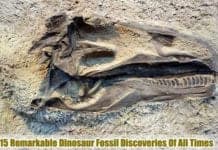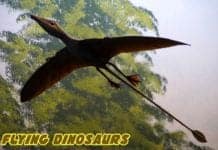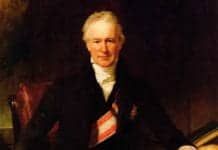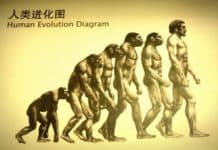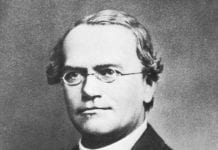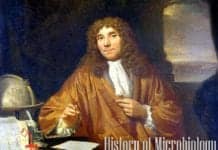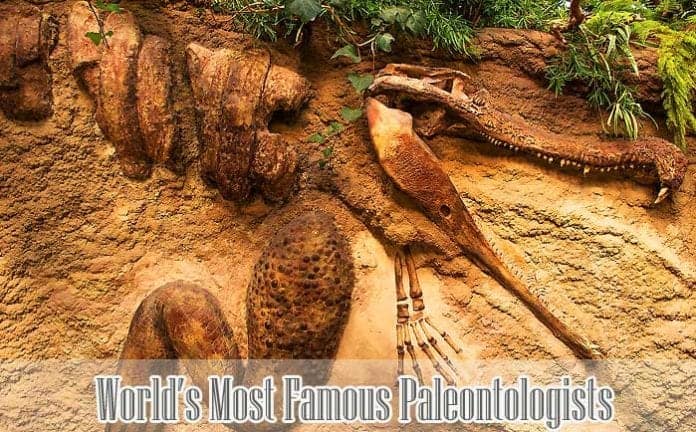
Table of Contents
- 15 Famous Paleontologists
- William Buckland (1784-1856)
- Stephen Jay Gould (1941-2002)
- John Ostrom (1928-2005)
- Alan Walker (1938-)
- Henry Fairfield Osborn (1857-1935)
- James Hall (1811-1898)
- Benjamin Franklin Mudge (1817-1879)
- Louis Agassiz (1807-1873)
- John “Jack” Horner (1946-)
- John Fleagle (1946-)
- Luis Alvarez (1911-1988)
- Mary Anning (1799-1847)
- Edwin Colbert (1905-2001)
- Charles Darwin (1809-1882)
- George Cuvier (1769-1832)
Famous Paleontologists: If you have ever been fascinated by the massive skeletal remains of dinosaurs or the unearthed early human tools exhibited in museums, you probably should thank paleontologists.
Paleontologists study the fossils (biological remains) of organisms that have lived in the past.
The information obtained from these fossils becomes beneficial because it establishes the link between the time and location an organism once lived in.
In the past centuries, the field of paleontology has greatly flourished due to the discoveries of various scientists. To give credit, below are just some of the few amazing scientists who made the field of paleontology blossom the way it is today. These famous paleontologists is not listed in any particular order.
15 Famous Paleontologists
William Buckland (1784-1856)
![]()
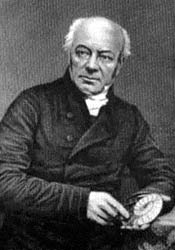 Even at an early age, William Buckland found his interest in the field of paleontology. Among his contributions in the field were the following:
Even at an early age, William Buckland found his interest in the field of paleontology. Among his contributions in the field were the following:
Key Contributions of William Buckland in Paleontology
- He wrote a dinosaur fossil’s first complete account.
- Later on, he called the giant reptilian organism the Megalosaurus (which would be later called the dinosaur).
- He pioneered the use of fossilized fecal matter (called coprolites) in the reconstruction of the ideas about primitive ecosystems.
Further Reading: Strange Science
![]()
Stephen Jay Gould (1941-2002)
![]()
 A professor at Harvard himself, Stephen Gould rose to fame in the field of paleontology during the 20th century.
A professor at Harvard himself, Stephen Gould rose to fame in the field of paleontology during the 20th century.
Key Contributions of Stephen Jay Gould in Paleontology
- Perhaps, his greatest contribution was being the lead promoter of the theory about evolutionary change.
- His theory, better known as punctuated equilibrium, suggested that changes in fossil records are not a result of a slow and steady process but rather caused by sporadic changes.
Further Reading: Stephen Jay Gould & NYTimes Article on his life.
![]()
John Ostrom (1928-2005)
![]()
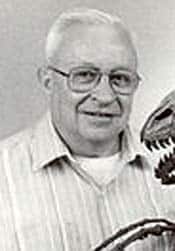 If you are greatly fascinated by the discovery of dinosaurs, this scientist is the one you should also give the credits to.
If you are greatly fascinated by the discovery of dinosaurs, this scientist is the one you should also give the credits to.
Key Contributions of John Ostrom in Paleontology
- In 1969, John Ostrom discovered the remains of an organism he called the “Deinonychus” which means “terrible claw“. As its name suggests, the human size animal is characterized by sharp-pointed claws and clutching hands.
- Years after, it was found out that this animal is a hundred and ten million year old dinosaur.
Further Reading: National Geographic (Scroll down to Dinosaurs) and Berkeley Journal.
![]()
Alan Walker (1938-)
![]()
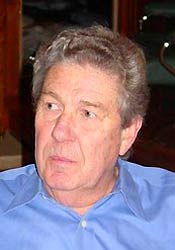 Alan Walker is another great paleontologist who supposedly became interested in paleontology when he was 11 years old by examining fossils near his home.
Alan Walker is another great paleontologist who supposedly became interested in paleontology when he was 11 years old by examining fossils near his home.
Key Contributions of Alan Walker in Paleontology
- He studied the first stages of human evolution, particularly in the different epochs (Miocene, Pliocene, and Pleistocene) in the geologic time scale.
- Alan Walker focused mainly on data and fossils obtained from East Africa. As a result, he could deduce ancient behaviors exhibited by the organisms’ biological remains.
- In addition to this, Walker discovered hundreds of fossils which include: a skeleton of a young Homo erectus and a skull of an Australopithecus.
Further Reading: The Ape in Trees.
![]()
Henry Fairfield Osborn (1857-1935)
![]()
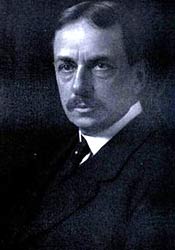 For 25 years, Osborn was the president of the American Museum of National History. It led to the museum’s research programs and facilities expansion.
For 25 years, Osborn was the president of the American Museum of National History. It led to the museum’s research programs and facilities expansion.
Key Contributions of Henry Osborn in Paleontology
- In the early 20th century, Osborn rose to fame after leading various fossil hunting expeditions and after training new vertebrate paleontologists in the Western United States.
- Osborn also described and named several dinosaur species such as the Ornitholestes, Tyrannosaururs rex, Pentaceratops, and Velociraptor.
- Osborn also conducted several studies about the brains of T.rex by dissecting the fossils using a diamond chainsaw.
Further Reading: The Osborn Problem.
![]()
James Hall (1811-1898)
![]()
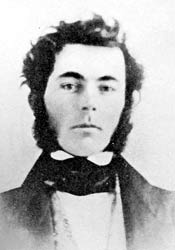 Dubbed by many as the “Father of Modern Geology”, James Hall is very much known for his work on the geosyncline principle in mountain-building.
Dubbed by many as the “Father of Modern Geology”, James Hall is very much known for his work on the geosyncline principle in mountain-building.
Key Contributions of James Hall in Paleontology
- In this geosyncline principle, he discovered the main reason a basin sinks: the gradual buildup of sediments forcing it to subside slowly.
- Aside from that, Hall also founded the famous New York Natural and History Museum.
Further Reading: James Hall Legacy.
![]()
Benjamin Franklin Mudge (1817-1879)
![]()
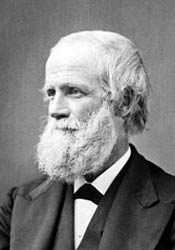 B.F.Mudge is very much known to be a collector of fossils. He was one of the first paleontologists to document detailed information about every fossil he found.
B.F.Mudge is very much known to be a collector of fossils. He was one of the first paleontologists to document detailed information about every fossil he found.
Key Contributions of Benjamin Franklin Mudge in Paleontology
- One of his greatest contributions in the field was his discovery of the Ichthyomis, the first “bird with teeth”.
- Together with John Parker, he founded the Kansas Academy of Science (formerly Kansas Natural History Society) in 1878.
Further Reading: Robinson Library Archives.
![]()
Louis Agassiz (1807-1873)
![]()
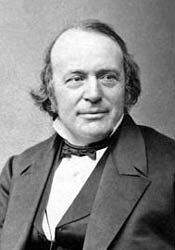 A renowned American biologist and geologist, Louis Agassiz focused on living and fossil fishes on glaciers. Such discoveries founded the very basis for ichthyological (fish) identification and classification.
A renowned American biologist and geologist, Louis Agassiz focused on living and fossil fishes on glaciers. Such discoveries founded the very basis for ichthyological (fish) identification and classification.
Key Contributions of Louis Agassiz in Paleontology
- During his time, as a result of his extensive research, Agassiz’s discoveries became evidence that somehow disproved the theory of the “Biblical flood”.
- However, he focused too much on glaciers, the main driving mechanism that changed the Earth’s geology, so he rejected the idea of evolution.
Further Reading: Berkeley Journal.
![]()
John “Jack” Horner (1946-)
![]()
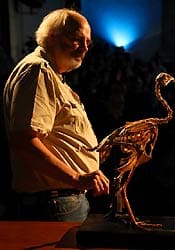 Jack Horner’s research centered on the growth and behavior of dinosaurs. In particular, his contributions are the following:
Jack Horner’s research centered on the growth and behavior of dinosaurs. In particular, his contributions are the following:
Key Contributions of John Horner in Paleontology
- He discovered that, like any other animals, dinosaurs do nurture their young. He also found that they were social animals, and some could be found in groups.
- Furthermore, he found out that some dinosaurs are “unevolved” versions of other species.
- At present, he is searching for a way to reactivate dinosaur DNA in birds to “revive” and create modern dinosaurs.
Further Reading: Famous Scientists.
![]()
John Fleagle (1946-)
![]()
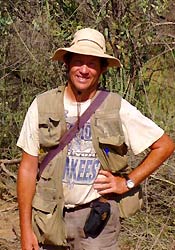 John Fleagle, by studying fossils, has extensively documented the evolutionary history and biology of higher primates including apes, monkeys, and humans.
John Fleagle, by studying fossils, has extensively documented the evolutionary history and biology of higher primates including apes, monkeys, and humans.
Key Contributions of John Fleagle in Paleontology
- He worked on the functional and comparative anatomy of primates from Asia and Africa.
- He also studied primate behavioral abilities and compared their ecological roles in their communities.
Further Reading: Stony Brook School of Medicine.
![]()
Luis Alvarez (1911-1988)
![]()
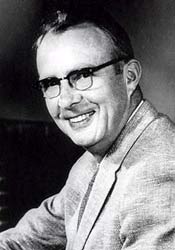 An experimental physicist himself, Luis Alvarez also made a mark in the field of paleontology.
An experimental physicist himself, Luis Alvarez also made a mark in the field of paleontology.
Key Contributions of Luis Alvarez in Paleontology
- Together with his son named Walter and colleagues, Luis Alvarez proposed the reason why dinosaurs became extinct—an destructive asteroid (the size of San Francisco) that slammed into planet Earth.
- Later, this idea was called the “Alvarez Hypothesis” in honor of their work.
Further Reading: About Luis Alvarez.
![]()
Mary Anning (1799-1847)
![]()
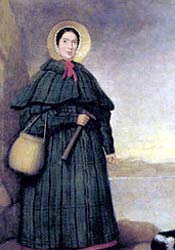 Did you know that the creation of the tongue twister “She sells sea shells by the sea shore” was inspired from a paleontologist? One of the most renowned females in this field, Mary Anning is considered by many as the “Greatest Fossilist in the world”.
Did you know that the creation of the tongue twister “She sells sea shells by the sea shore” was inspired from a paleontologist? One of the most renowned females in this field, Mary Anning is considered by many as the “Greatest Fossilist in the world”.
Key Contributions of Mary Anning in Paleontology
- Her greatest contribution was discovering the Jurassic fossils beds in Lyme Regis in Dorset. Aside from that, the London Geological Society awarded her for discovering the fossil of Ichthyosaurus.
Further Reading: Famous Scientists – Mary Anning.
![]()
Edwin Colbert (1905-2001)
![]()
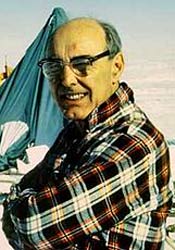 As a paleontologist himself, Colbert’s expertise on the field had greatly improved after being the caretaker of the American Museum of Natural History for 40 years. Aside from that, the following are Colbert’s remarkable contributions to the field of paleontology.
As a paleontologist himself, Colbert’s expertise on the field had greatly improved after being the caretaker of the American Museum of Natural History for 40 years. Aside from that, the following are Colbert’s remarkable contributions to the field of paleontology.
Key Contributions of Edwin Colbert in Paleontology
- He has led various expeditions that excavated important dinosaur fossils like the Staurikosaurus.
- In South Africa, Colbert discovered the remains of the Lystrosaurus, a primitive therapsid (a mammal-like reptile)
Further Reading: About Edwin Colbert.
![]()
Charles Darwin (1809-1882)
![]()
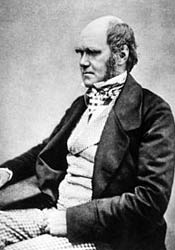 When one talks about evolution, Charles Darwin is probably the first person that comes into his mind. Other Darwinian contributions in the field are the following.
When one talks about evolution, Charles Darwin is probably the first person that comes into his mind. Other Darwinian contributions in the field are the following.
Key Contributions of Charles Darwin in Paleontology
- Famous for that controversial theory, Darwin concluded the fossils and likelihood between related living organisms.
- After finalizing all the evidence he found, Darwin was able to write his book entitled On the Origin of Species using Natural Selection.
Further Reading: History of Evolution.
![]()
George Cuvier (1769-1832)
![]()
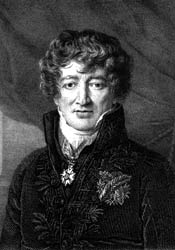 Perhaps the most important person on this list, George Cuvier is referred by many as the “Father of Paleontology“. Below are just some of the reasons why.
Perhaps the most important person on this list, George Cuvier is referred by many as the “Father of Paleontology“. Below are just some of the reasons why.
Key Contributions of George Cuvier in Paleontology
- He founded vertebrate paleontology as a separate scientific discipline.
- His contributions in the field include research on the comparative biology of invertebrates and vertebrates.
- The principle of the endangerment and extinction of organisms also came from Cuvier.
Further Reading: Berkeley University – George Cuvier.
![]()
More than any other field of science, paleontology provides opportunities to explore the past and the vast possibilities of scientific ideas that have yet to be discovered.
But unfortunately, since its commencement, there is still no Nobel Prize that have been awarded for paleontology or any other related fields of natural history. This only means that in the future, paleontologists will have to exert more effort in digging for answers to questions about the past.
Cite This Page
Photo Credits: Wikimedia.com under creative commons licenses.



